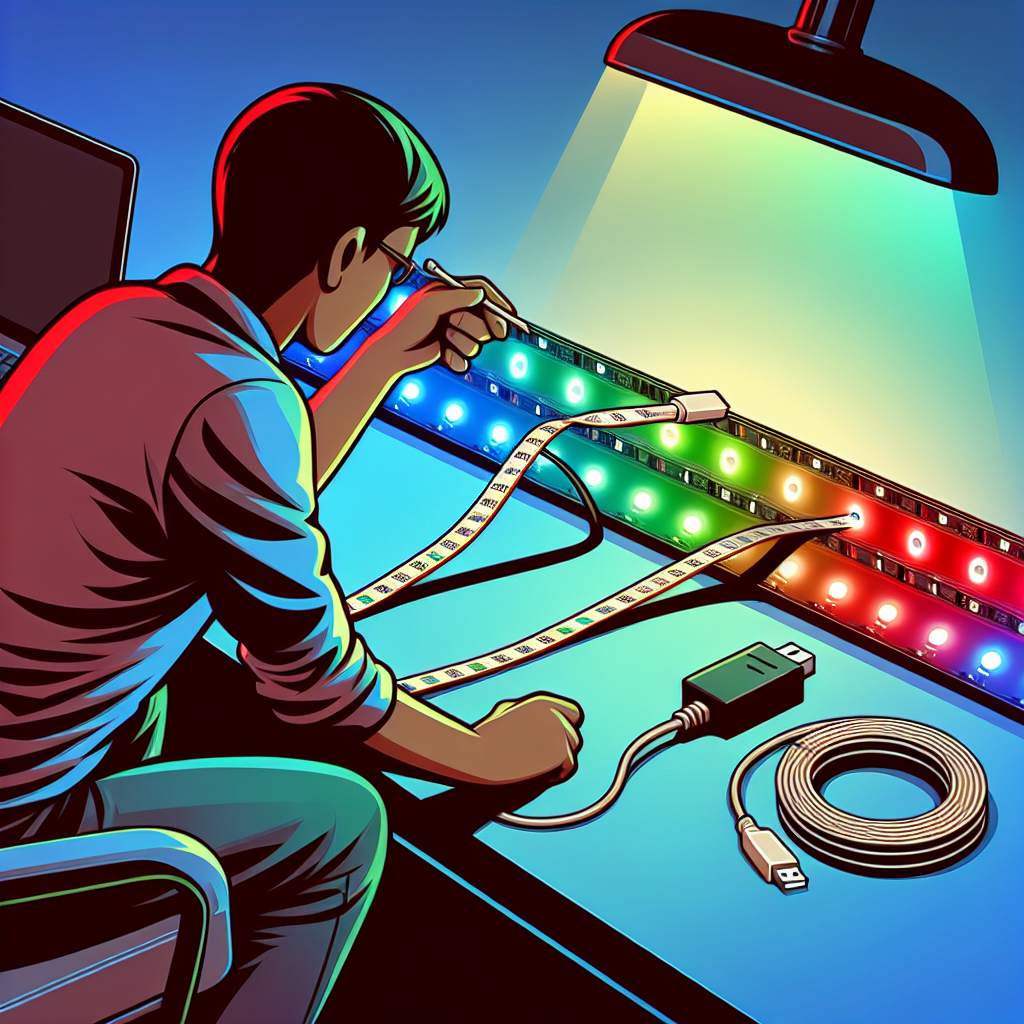Understanding the Problem of Flickering RGB Lighting
RGB lighting adds a vibrant touch to your gaming setup, creating an immersive atmosphere that many users cherish. However, flickering issues can arise, particularly when connecting RGB devices through a USB hub. This article will delve into why your RGB lighting might flicker and how to resolve the issue effectively.
Common Causes of RGB Flickering
Before we explore solutions, it is essential to understand the factors contributing to flickering RGB lighting:
- Insufficient Power Supply: Some USB hubs provide inadequate power to connected devices, leading to flickering lights.
- Faulty USB Hub: An unreliable or damaged USB hub can disrupt the power and data flow, causing flickering.
- Software Conflicts: RGB lighting effects may conflict with other software controlling the lighting.
- Driver Issues: Incorrect or outdated drivers for your RGB devices can lead to inconsistent performance.
- Cable Quality: Poor quality or damaged USB cables may contribute to weak signal transmission.
Key Solutions to Fix Flickering RGB Lighting
To address the flickering issue effectively, consider implementing the following solutions:
1. Upgrade Your USB Hub
Ensure that your USB hub can provide enough power to all connected devices. Many basic USB hubs do not supply sufficient wattage, especially for power-intensive RGB devices. Consider upgrading to a powered USB hub that features its own external power supply for better performance.
2. Use the Native USB Ports
If possible, connect your RGB devices directly to your computer’s native USB ports. Direct connections tend to offer improved power and data stability compared to USB hubs.
3. Test All USB Devices
To identify if the issue is specific to one device, disconnect all RGB devices from the USB hub and reconnect them one by one. This method can help determine whether a particular device is causing the flickering.
4. Update Drivers
Regularly updating the drivers for your RGB devices can resolve software conflicts and improve overall performance. Visit the manufacturer’s website and download the latest drivers for your devices.
5. Check Cable Quality
Examine the USB cables for any signs of damage or wear. Ensure you are using high-quality cables with adequate shielding to minimize interference and signal loss.
6. Adjust RGB Software Settings
If your RGB lighting is managed through specific software, review the settings to ensure they are correctly configured. Sometimes, unwanted settings or software conflicts can lead to flickering.
7. Reduce the Number of Devices on the Hub
Limiting the number of connected devices to the USB hub can significantly enhance the power distribution and reduce flickering. Disconnect any unnecessary devices when using RGB lighting.
Table: Comparison of USB Hubs for RGB Lighting
| USB Hub Model | Power Supply | USB Ports | Price | Rated Power Output |
|---|---|---|---|---|
| Model A | External | 7 | $25 | 60W |
| Model B | External | 10 | $35 | 100W |
| Model C | Powered | 4 | $15 | 30W |
| Model D | Powered | 7 | $40 | 80W |
Additional Tips for Maintaining Your RGB Setup
- Clean your devices: Dust and debris can affect the performance of RGB lights. Regular cleaning can keep your devices functioning optimally.
- Avoid Overloading: Ensure that you do not exceed the total power consumption of the USB hub.
- Use Quality Products: Opt for reputable brands for both USB hubs and RGB devices to guarantee better functionality and compatibility.
Conclusion
Flickering RGB lighting can be frustrating, but with the right approach, it can be resolved effectively. By evaluating your USB hub, updating drivers, and adjusting your settings, you can restore a stable and visually appealing RGB experience. Remember to use quality components and maintain your setup to keep issues at bay.

